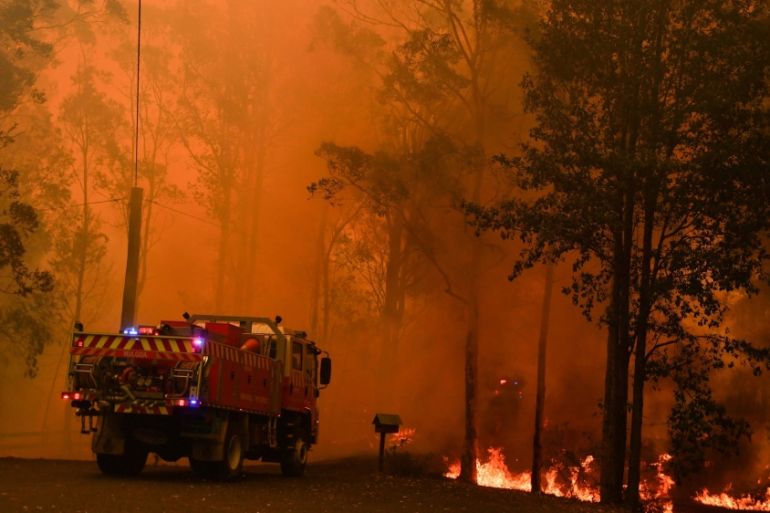Beyond Compliance: Enhancing Home Security with a Thorough BAL Report Evaluation
Beyond Compliance: Enhancing Home Security with a Thorough BAL Report Evaluation
Blog Article
Ensuring Shrub Fire Protection Via Appropriate BAL Record Analysis
In the world of bush fire protection, the thorough evaluation of Bushfire Attack Level (BAL) records stands as a keystone for safeguarding properties against the disastrous impact of wildfires. With environmental elements and home qualities playing considerable roles in figuring out the level of danger, a complete understanding of BAL rankings becomes imperative.
Recognizing Bushfire Strike Level (BAL)
In the realm of bushfire protection, comprehending the Bushfire Strike Level (BAL) is critical for guaranteeing efficient mitigation techniques. BAL is a system made use of to gauge the possible threat a structure might deal with from a bushfire. It considers factors such as the kind of plant life, the incline of the land, the Fire Risk Index, and the Fire Severity Index. Recognizing the BAL score of a residential or commercial property is crucial for residential property contractors, owners, and policymakers to implement appropriate procedures to protect versus bushfire threats.

Relevance of BAL Record Evaluation
A necessary element in bushfire security preparation includes the detailed evaluation of BAL reports to analyze the potential risks and identify proper reduction approaches. BAL records provide essential info regarding the possible impact of bushfires on a building based on different elements such as greenery type, range to prospective fire risks, and incline of the land. Analyzing these reports with precision is vital in establishing reliable bushfire security procedures customized to the specific danger profile of a property.
Applying Fire Protection Measures
Carrying out effective fire defense actions is critical for securing buildings in bushfire-prone locations. This includes clearing up combustible vegetation, such as completely dry leaves and branches, within a particular radius of the residential property.
Moreover, having a appropriate and properly maintained water supply, such as a storage tank or pool, can assist firefighters in their initiatives to shield the home. BAL Report. In general, applying a combination of these fire defense procedures can significantly raise the possibilities of guarding residential or commercial properties throughout bushfire events.
Mitigating Dangers in Fire-Prone Locations
To fortify buildings against try this site bushfire hazards, a tactical emphasis on mitigating risks in fire-prone locations is imperative. One crucial facet of danger reduction is maintaining defensible space around buildings by clearing combustible vegetation, making sure adequate spacing between structures and trees, and using fire-resistant landscape design practices.
In addition, constructing straight from the source or retrofitting structures with fire-resistant products and guaranteeing proper maintenance of roofs, seamless gutters, and external cladding can substantially enhance the residential or commercial property's durability to bushfires. Developing and practicing a bushfire emergency situation plan with all residents, consisting of emptying treatments and communication methods, is also important in mitigating dangers effectively. By adopting an aggressive technique to risk reduction in fire-prone areas, homeowner can much better safeguard their properties and improve overall bushfire readiness.
Ensuring Residential Property Safety and Strength
Making sure the security and resilience of properties in fire-prone areas requires an unfaltering commitment to durable safety nets and calculated planning. Property security starts with executing effective actions to decrease fire dangers. This includes keeping a defensible room around the home by clearing flammable plant life, making certain correct maintenance of rain gutters and roofs, and making use of fireproof building materials. Normal upkeep of firefighting devices, such as hoses and sprinkler systems, is additionally vital to property strength.
Resilience, on the other hand, includes the capacity of a home to recover and withstand from a bushfire. This can be enhanced via the installation of ember guards on vents and windows, making sure that entry points for cinders are reduced. Additionally, having a well-thought-out evacuation strategy and exercising it regularly can significantly increase residential or commercial property resilience. Teaming up with next-door neighbors and regional fire authorities can likewise reinforce the safety and strength of properties in fire-prone areas. By proactively addressing these facets, homeowner can better shield their properties and liked ones from the Visit This Link threat of bushfires.
Verdict
Finally, ensuring bushfire defense through appropriate BAL report evaluation is vital for comprehending the degree of threat positioned by bushfires and applying required fire defense procedures. By mitigating threats in fire-prone areas and making certain building security and resilience, people and communities can better get ready for and react to bushfire events. It is important to focus on fire security measures to shield lives and building in these risky settings.
In the world of bush fire defense, the thorough evaluation of Bushfire Assault Level (BAL) records stands as a foundation for guarding residential or commercial properties versus the devastating effect of wildfires (BAL Report). Recognizing the BAL score of a residential or commercial property is critical for building owners, building contractors, and policymakers to execute proper measures to protect versus bushfire threats

BAL reports give crucial details about the possible effect of bushfires on a residential or commercial property based on various elements such as plant life type, range to prospective fire threats, and incline of the land (BAL Report). On the whole, implementing a mix of these fire security actions can considerably raise the chances of guarding residential properties during bushfire occasions
Report this page